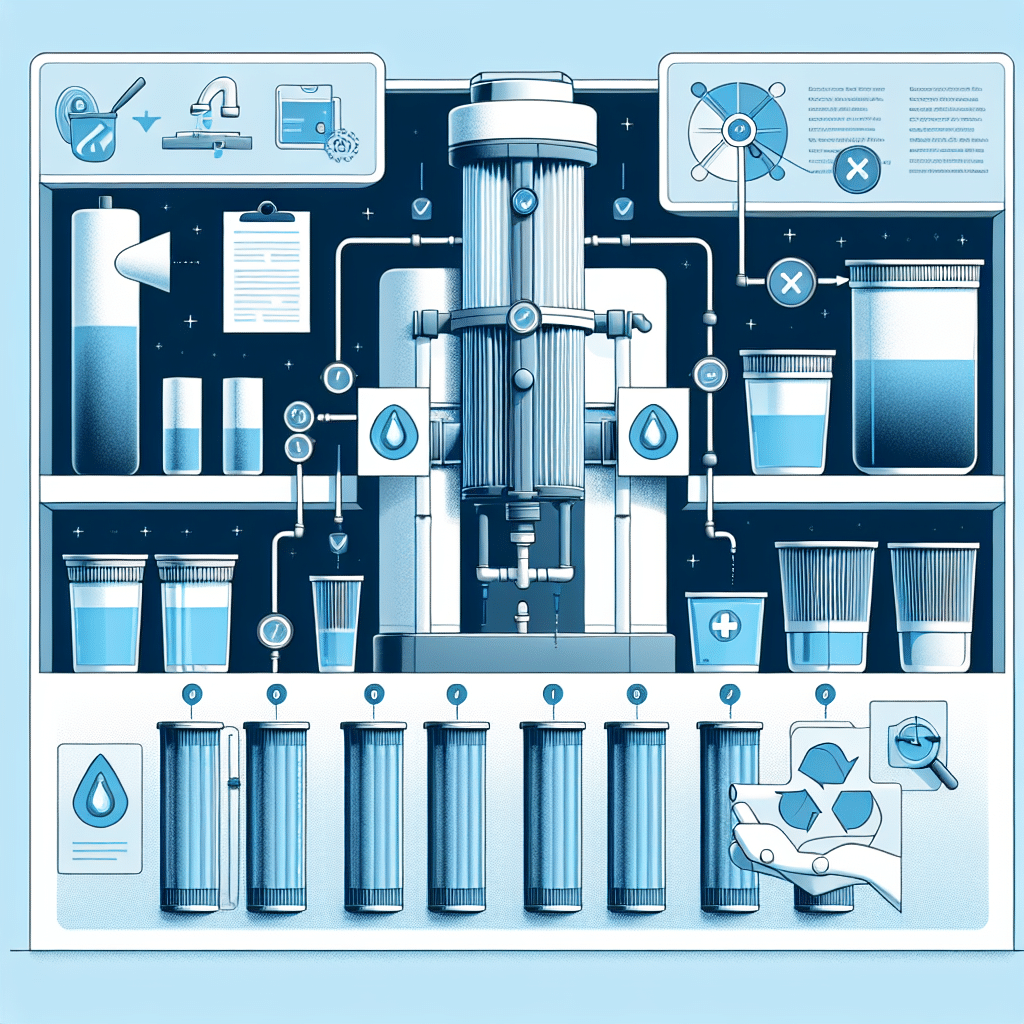Understanding Cross-Contamination in Water Filters
Defining Cross-Contamination
Cross-contamination in water filters occurs when contaminants from one source enter the filtered water, undermining the filtration process. This can happen through various means, including improper handling, maintenance, and disinfection practices. Understanding how cross-contamination occurs is crucial for ensuring clean and safe drinking water.
Importance of Preventing Cross-Contamination
Preventing cross-contamination is essential for health and safety, particularly for families, individuals with compromised immune systems, and communities reliant on well water or similar sources. Maintaining the integrity of water filters ensures that harmful bacteria, viruses, sediments, and other pollutants do not compromise drinking water quality.
Best Practices for Preventing Cross-Contamination
1. Choose Quality Water Filters
Investing in high-quality water filters is the first step towards preventing cross-contamination. Look for filters that have been certified by reputable organizations such as NSF International or the Water Quality Association, ensuring they meet strict safety and performance standards.
2. Regular Maintenance and Replacement
Routine maintenance and timely replacement of filters are critical. Follow the manufacturer’s guidelines regarding filter lifespan and replace them as recommended. Most point-of-use filters should be replaced every 6 to 12 months, while systems like whole-house filters may have different timelines based on water quality and usage.
3. Proper Handling Techniques
Handling filters with clean, dry hands is essential to minimize contamination. Always use gloves when touching filter cartridges or components, and avoid touching any surfaces that come into contact with water after they have been installed.
4. Secure Connections and Installations
Ensure that all connections between the filter and water source are secure to prevent leaks. A loose connection can allow contaminants to enter the water supply. Always follow the manufacturer’s instructions closely during installation.
5. Clean Water Reservoirs Regularly
If your filtration system includes a reservoir, be diligent about cleaning it on a regular basis. Use a vinegar solution or a mild disinfectant to sanitize the tank and remove any potential biofilm or sediment buildup that can introduce contaminants into the filtered water.
6. Use Clean Containers for Storage
Store filtered water in clean, BPA-free containers to prevent leaching or contamination from previous contents. Avoid reusing containers that once held food products, as residues may harbor bacteria.
7. Correctly Maintain Hoses and Tubing
Regularly check and replace hoses and tubing associated with your filter system. Cracks or wear in hoses can lead to contamination. Ensure that these components are also free from any dirt, mold, or biofilm.
8. Implement Sanitization Protocols
Adopt a routine sanitization protocol for your water filtration system. This can include periodically flushing the system with a disinfectant designed for water filtration equipment. Always follow the manufacturer’s guidelines for the proper use of sanitizing agents.
9. Monitor Water Quality
Regularly testing your water quality can help catch signs of contamination before they become a health hazard. Kits are available for testing bacteria, chlorine levels, pH, and other important indicators of water quality.
10. Educate Household Members
Ensure that all family members understand the importance of water filter maintenance. Teach them how to properly handle filters and recognize early signs of contamination, such as unusual odors or tastes in the water.
Additional Considerations for Enhanced Safety
11. Be Wary of Environmental Influences
Environmental factors such as flooding, agricultural runoff, and industrial discharges can impact water quality. Be especially vigilant if your water source is affected by such events, and consider using additional filtration products if necessary.
12. Utilize UV Light Systems
Incorporating ultraviolet (UV) light disinfection systems can significantly reduce risk factors related to microbial contamination. UV systems are effective at killing bacteria and viruses that traditional filters may not eliminate.
13. Consider Whole House Filtration Systems
For comprehensive protection, consider installing a whole-house filtration system. These systems treat all water entering the home and may include stages for sediment filtration, chemical removal, and UV disinfection.
14. Invest in Quality Installation
Hiring a certified plumber or technician to install your water filtration system can prevent issues that lead to cross-contamination. Proper installation guarantees that all components are fitted correctly and reduces the risk of leaks.
15. Use an Activated Carbon Block Filter
Activated carbon block filters are effective against chlorine, bad taste, and odor. They also help reduce contaminant concentrations more efficiently than traditional granular activated carbon filters.
16. Maintain a Clean Kitchen Environment
Your kitchen can be a source of contamination if not properly maintained. Regularly clean countertops, sinks, and kitchen tools that may come into contact with both raw food and purified water.
17. Inspect Filtered Water Regularly
Keep an eye on the clarity and taste of filtered water. Visible impurities or off-flavors can indicate potential contamination. Address any concerns immediately by replacing filters or performing maintenance.
18. Limit Risks During Emergencies
During power outages or other emergencies, avoid using tap water directly from the source. Consider a backup filtering system, such as portable water filters or purification tablets, to ensure safe drinking water whenever necessary.
19. Track Water Usage Patterns
Keep detailed records of water usage and filter changes. Scheduling routine checks based on usage patterns can help maintain consistent water quality and identify problems before they escalate.
20. Review Local Water Quality Reports
Stay informed about local water quality reports published by municipal authorities. Understanding the contaminants present in your area enables you to take proactive measures to further protect your water supply.
By adhering to these best practices, individuals and families can significantly reduce the risk of cross-contamination in their water filters, ensuring access to clean and safe drinking water. Prioritizing cleanliness and maintaining vigilance in water quality will enhance health and wellbeing for all users.
